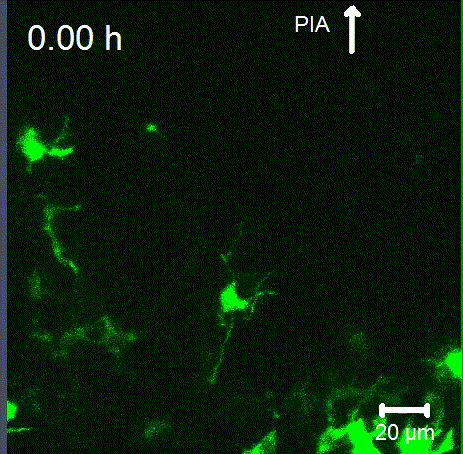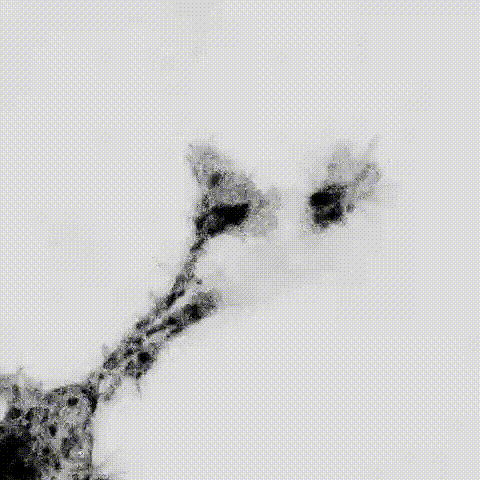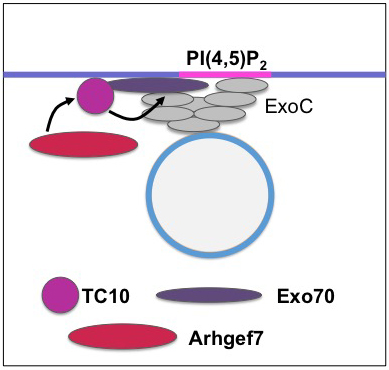AG Püschel - Cellular mechanisms of neuronal differentiation

Neurons are highly polarized cells with distinct axonal and somatodendritic compartments. During the development of the mammalian cortex, newborn neurons transiently assume a multipolar morphology before they become bipolar and migrate into the cortical plate. During this transition from a multi- to a bipolar morphology neurons extend a rapidly growing axon and form a leading process to initiate their radial migration.
The temporal and spatial control of membrane dynamics is essential for neuronal differentiation. Defects in intracellular transport disrupt cortical development and lead to neurodevelopmental disorders and neurodegenerative diseases.

The extension of the axon requires the polarization of intracellular transport processes and the expansion of the cell membrane by the exocytosis of vesicles that supply the material for membrane expansion.
Their exocytosis in the growth cone depends on the exocyst complex that mediates the tethering of vesicles at the cell membrane prior to their fusion. It is localized to the membrane by the binding of the exocyst subunits Exo70 and Sec3 to phosphatidylinositol 4,5-bisphosphate (PI(4,5)P2) micro-domains. Exo70 is thought to serve as a spatial landmark that recruits the remaining subunits. It interacts with the GTPase TC10 that localizes the exocyst to the plasma membrane together with PI(4,5)P2.

The aim of our projects is to understand how different signaling pathways direct the transition to a bipolar morphology and the initiation of neuronal migration through a polarization of intracellular transport processes. We are investigating the transport of vesicles and mitochondria by life cell imaging in dissociated neurons and organotypic slice cultures from the embryonic mouse cortex.
We have shown that the Rap1 GTPases act as master regulators of cell polarity in the developing cortex. To dissect the signaling pathways regulated by Rap1 GTPases, we utilize different fluorescent reporter constructs to analyze intracellular trafficking after the inactivation of key components of specific signaling pathways by knockdown or knockout.
We have also identified the guanine nucleotide exchange factor Arhgef7 as an essential regulator of neuronal polarity and shown that it activates the Rho GTPase TC10. We are using live cell imaging and optogenetic manipulation to understand how Arhgef7 and TC10 regulate membrane dynamics during neuronal polarization through the exocyst complex. The life cell imaging experiments are combined with the development of new tools for high-resolution imaging and optogenetic manipulation in neurons
